There aren’t many North American audiophile shows that I miss these days. I have also added the Munich (now moving to Vienna in 2026) HI-FI Show to my list as well. Every year in the fall CEDIA (often in Denver these days) is a show that I attend. It’s not necessarily a perfect content match for all our two-channel readers but a good number of our clients display at CEDIA, thus there is always some good audio to experience and, in my case, clients to hobnob with. I need to be there and CEDIA has the best group rate at the Four Seasons Denver ($339 a night is low for a Four Seasons room anywhere these days, and only makes staying at CEDIA even more fun and luxurious).
In the fall, often conflicting with CEDIA in some potentially avoidable way or another, Rocky Mountain Audiofest was a must-attend show for audiophiles nationwide, as well as for many international companies and executives. For a solid decade, the whole audiophile world descended on the Denver Tech Center and took over a pretty rundown Marriott for what was an important show that I rarely, if ever, missed in its heyday. Sadly, the founder of the show, who got the Denver Audiophile Society to sponsor it, died. He’s not the only audiophile show impresario who died in recent history, as T.H.E. Show’s founder (who had moved the show from a “carpetbagger show” for audiophiles during CES to a home in Orange County) died a number of years back but, thankfully, the show goes on every year.
Filling the seasonal needs for an audiophile show is Gary Gill’s Capital Audiofest, based in Bethesda, Maryland. I am on the 787-9 Dreamliner from Dulles to Los Angeles as I type. The 2025 show was very good for me, as I had more than the usual number of great meetings in the three days that I spent near our nation’s capital. I heard some good audio demos, too, along with making new friends and closing deals. This year’s show was worth every penny that I invested, without question, and I would say most of the attendees would have agreed that this was a very good show.
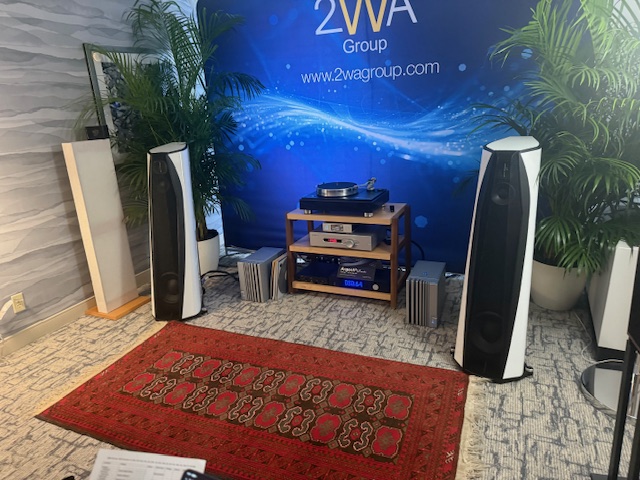
Why Do You Use This New Format to Cover Audiophile Shows?
When I tell you that I literally invented early trade show coverage for online AV publications, I am not making this up. I had a team of people at Bellagio, the year that it opened (that’s an eternity in any Las Vegas timeline at this point), shuttling Jazz Drives to lay out coverage and edit photos to upload to AudioRevolution.com (we weren’t even AVREV.com at that point). We were connecting via dial-up modems to Earthlink local access points in Las Vegas. It was the old days, friends. It worked, but it was crude at the same time
Take all of the self-congratulatory bullshit out of my pioneering audiophile show coverage, because it is just that: bullshit. There were so many unique problems with my concept. One was the fact that you could never make everybody happy and nobody can cover all of the world’s largest tradeshows, with 189,000 attendees at its peak. The costs of having people staying, eating, taking taxis, car mileage, fuel, etc. was expensive. Like, really expensive. Then there were more issues, in that much of what is shown at a show like CES is tantamount to the consumer electronics version of an auto show featuring a really exciting concept car. It looks cool as hell but, more often than not, you will never be able to buy said car. In the case of audiophile gear introduced at shows, the gear eventually comes to market, but it can be months or even a year plus before the displayed audiophile component can be shipped to a dealer or direct to a customer. However, the old version of the product becomes a dead man walking and, without price cuts or big incentives, the old products lose a lot of their steam. Are those enough reasons as to why my show coverage format realistically sucks? Because it does, and I won’t spend all of my time at a show going to each room and taking notes and photos. It is too much work and keeps me from making money.
As a huge NHL hockey fan, I stole a format that is more fun and way better. Elliotte Friedman is one of the most trusted names in the NHL writers pool. He puts out a weekly article called 32 Thoughts, 32 being the number of teams in the NHL. I like his model much better, so we are going to do that here, with thoughts, rumors, news and product talk from Capital Audiofest. Paul Wilson and I went into every room of the show. This is a random, in no specific order, list of ideas that we wrote down, so that you can get an idea of what the show was like, assuming that you didn’t make it to the Bethesda Hilton this weekend.
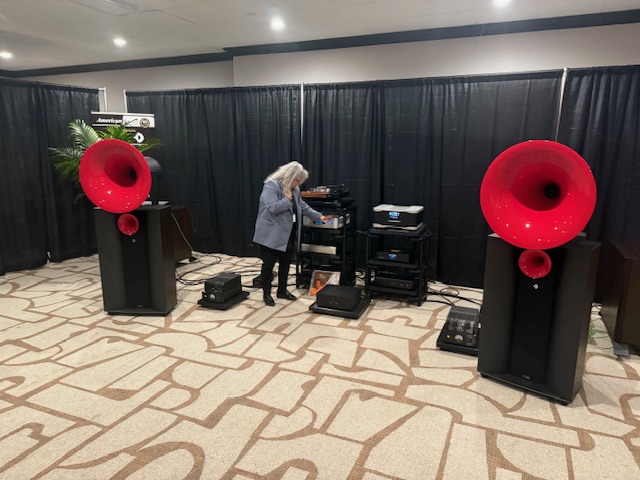
No. 1: Close the Door on Your Audiophile Demo Room
When walking down Rodeo Drive in Beverly Hills, I always found it a bit offensive or just wasteful to have the gigantic doors to the retailers open, while the AC is hammering on a 85-degree summer day. I found new problems with the same concept in the first room that Paul and I sat down in. They wanted a full house for their demos, so they left the door open to their large suite. There’s an entire atrium out the window and, when I was listening to a delicate female vocalist in a quiet, well-recorded yet delicate track, I thought Paul might have slipped a tab of acid in my iced tea at lunch, as I was hearing Billy Joel imaging way outside of the left speakers. That’s not great imaging. That is a 50-plus-dB noise floor literally ruining the sound of your $250,000-plus system demo. Close the damn doors.
No. 2: Installing a Little Bit of Rope on a Demo Room Door is a Great Show Idea!
Since we are talking about doors, a few years ago somebody really smart figured out how to creatively put rope around the door handle mechanism, so that the door mostly shuts but never slams, which is an equally distracting sonic event that messes up your audiophile vibe. This is one of most simple ideas that is also one of the most effective.
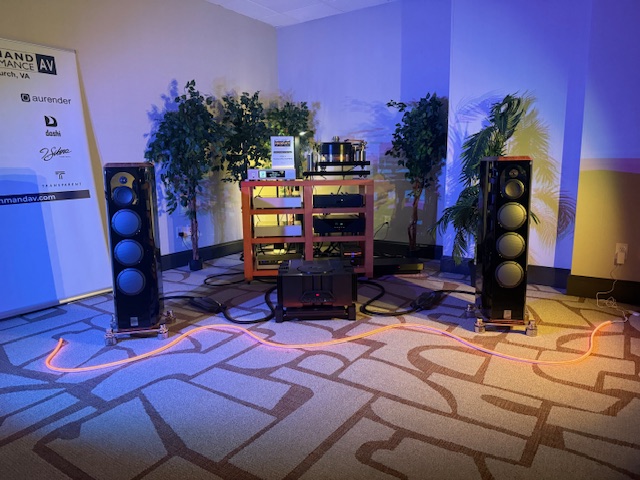
No. 3: Some Well-Designed but Low-Cost LED Lighting Can Add Visual Drama to Your Audiophile Magic
One of the rooms that Paul and I never miss features Gryphon Electronics. Man, is that stuff ever good. Big, heavy and expensive are downsides to Gryphon; being really great-sounding is all the upside well-heeled audiophiles can get. In this suite, the dealer (I think it was a dealer-supported room) used a cool rope of LED light as a visual pop for their audio demo and it added a little spice to the experience. Others used tiny LED lights to good effect. Still others had table-mounted LED lamps to beam soft, warm temperature (2900 Kelvin) light on turntables. All of these concepts are low-cost, effective and worthy of stealing.
No. 4: It is OK to Play Heavy Metal to Audiophiles But Not at 120 dB
I love heavy metal and I am not the only writer on staff who feels that way. There are many great heavy metal audiophile-grade demo tracks. “Du Hast” by Rammstein is a classic. Most of Godsmack’s first album is another winner. A lot of White Zombie or slightly newer Rob Zombie solo work is worthy of playing on a six-figure system by all means. “Livin’ After Midnight” by Judas Priest is a sleeper metal track. If you call Lenny Kravitz “metal,” the record that he worked with Slash on, Mama Said, is another rocking track. a
Here’s the problem … you should not be playing any track at 110 dB or louder (I didn’t measure, nor did I have to, because it was loud in this room – really loud). There’s nothing I want for you more than to have a visceral as well as an emotional experience with your audiophile system. What I can’t have is any of us going deaf trying to get to that level of audiophile nirvana.

No. 5: The Rise of the Subwoofer For Audiophiles
One of the most silly historical audiophile clichés is that bass is somehow better coming from your gigantic floorstanding speakers, as opposed to something more modest, say, a pair of high-performance subwoofers. The performance of a system with subs is better. You can get more visceral impact sonically without having to turn the volume up quite as loud. You also save a whole boatload of money by getting deeper, louder and better bass than even $1,000,000 per pair speakers can produce. That is the reality of designing your audiophile system around some configuration that includes one or more subwoofers. It’s just plain smart if you like more and better performance with spending way less money.
What was reassuring was how many audiophile demo rooms were using subwoofers. More sub companies were displaying at Capital Audiofest. Could it be that the stupid and incorrect audiophile tradition of being anti-subwoofer is dying? I sure as hell hope so and signs point to “yes,” as the magic eight-ball once said.

No. 6: Audiophile Weight Loss Competition?
Sanford Gross is not just one of our three most trusted advisors to the FutureAudiophile.com publication – he is also the best speaker marketer in history (Sorry Dr, Bose, you are second to Sanford Gross). Sandy loves the finer things in life, as well as food and wine. I don’t drink anymore (two-and-a-half years next month and I’ve never looked back), but I do love me a good meal. I’ve got reservations at Fishing With Dynamite in Manhattan Beach, as well as Evan Funke’s namesake eatery (once the hardest reservation in Los Angeles and known for the best pasta) Funke this coming week. I am allowed, because as of the day that I left for CAF, I weighed what I had in high school after having reached super fat ass status for way too long. I spent three years (I’ve tracked my weight in the same book since 2001 with plenty more pages left for the future – it’s a big, graph paper-laden book) at almost 300 pounds. Then, for a short period, I lost total control of my weight as for about two weeks, I made it above 300. I am at 229 now, and I am not supposed to lose any more weight, but I need to work more to add muscle. I plan to look into Pilates soon as a low-impact way to be less soft.
With all of that said, since Paul and I dined with Sandy Gross as well as Lucca Chesky at Capital Audiofest, Sandy has lost 80 pounds. He was retaining massive amounts of fluids (a good way to have congestive heart failure), but he’s on various meds and working out, too. We’ve both lost a lot of weight, but I am going to give the nod to Sandy.

No. 7: Don’t Get Fooled by the Incredible Story of an 18-Year-Old Starting a Successful Speaker Company Before He Left For His Freshman Year at College Because His Two Speakers are Just Incredible-Sounding
Chesky Audio is run by Lucca Chesky, the 18-year-old son of Grammy Award-winning audiophile engineer David Chesky. Did Lucca get access to the best people in the audiophile business to help him (Sandy Gross is like an uncle, as we saw when we all went out to dinner together)? You can put aside the made-in-America pitch, or the small speakers but big bass argument, which are both valid. The fact is that the Chesky Audio LC-1 $1,000-per-pair bookshelf speakers are made using the best drivers in a custom-designed cabinet made at the VPI turntable factory in New Jersey. Those talking points are all sexy, but they can’t distract any of us from listening to the young Mr. Chesky’s speakers, because they are just that good. He launched a new $2,000-per-pair bookshelf speakers and they sounded drastically better and even more dynamic than the LC-1s. Lucca also does a very good scripted demo, like Mark Levinson, Joe Cali and I did at Cello in the 1990s and still do too long after Cello has, in effect, ended.

No. 8: Room Treatments Are More Important in a Hotel Room Audiophile Demo Than in Your Listening Room and Treatments are the Most Important Component in 99 out of 100 Audiophile Systems
More and more of the rooms at today’s audiophile shows are using more and more sophisticated room treatments. One room has absorption on the side walls to tame first-order reflections. The trick was they somehow got the iconic image of The Beatles walking across the street for the Abbey Road album imposed on their treatments. I saw more bass traps in use (God, they work well for cheap – I lost mine in the fire, but I am getting more soon from GIK Acoustics). The Burmester room has Vicoustic treatments that looked like mid-century-inspired trapezoids that absorb sound. These would work better than traditional treatments in my listening room. I need to find out how much those Vicoustic units are. They might be pricey, but if they could be mounted on a stand, they could be perfect in my room. Let us not think that I didn’t get a little personal shopping in at Capital Audiofest 2025.
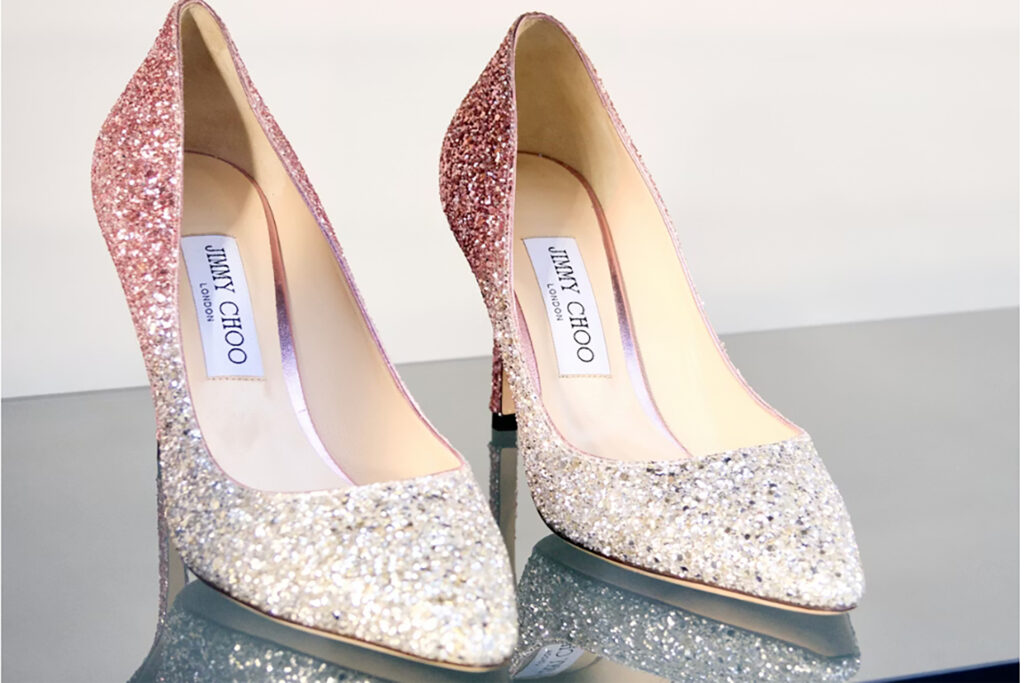
No. 9: My Jimmy Choo Joke Lands Nine Out of 10 Times When Being Extroverted (in the Name of Humor) When Talking to Another Audiophile’s Wife Who Accompanied Him to a Show Like CAF
Jimmy Choo shoes speak to women with the irrational yet sexy allure of an Oracle turntable or a Dan D’Agostino steampunk-inspired, uber-expensive power amp. Because I am a borderline mental patient who likes to open conversations with any potential female audiophiles (there are so, so, so few in reality, and we aim to change that here, but what a task) by asking them a simple question.
“Have you been to the room that is giving out free Jimmy Choos to one audiophile wife?” Most of wives believe me when I fib about this in an odd effort to make our hobby relatable to a wealthy man’s spouse. Most want to know which room (which somehow I always forget). More often than not, I let them know I was just trying to be cute and engaging, but the joke somehow still feels relevant. If engaging an audiophile’s wife makes her happier or smile a for a bit at a show like CAF, we start to address the severe gender imbalance that we suffer from in this hobby.
No. 10: Acora Acoustics Sells More of Its Small/Bookshelf Speakers to Women Than to Men?
Valerio Acora is a Canadian who comes from a family that has been importing and crafting exotic stone and granite from all over the world for generations. Acora, as an audiophile with this access to truly inert materials like stone, makes some of the most exotic-looking and compelling speakers. He also bought Audio Research after the bank called in the note on another well-known audiophile who had borrowed the money to buy ARC before Acora. Acora has an interesting tactic, which is that he rarely shows Acora speakers on ARC. That is so cool. Yes, he owns Audio Research, but he doesn’t ever suggest that his speakers only sound their best on his electronics. At Capital Audiofest 2025, Acora showed his system with competing and very high-quality VAC tube electronics. How refreshing. His wife Sheree is also a big reason why women buy Acora speakers at a far higher rate than other speakers in their class. There is a little bit speaker and a little bit exotic kitchen countertop in the value proposition, and that is a proposal that works.

No. 11: Uber-High-End German Audiophile Company MBL Allegedly Has a New Owner
A few people mentioned this to me, and I have no reason to think it is not true. I know some audiophile friends who have purchased MBL’s 360-degree imaging speakers to find that they broke and needed to go back in the crates and return to Germany. That’s months without your speakers. Here’s hoping that the new owners can right the ship for this well-respected, high-end audiophile brand.
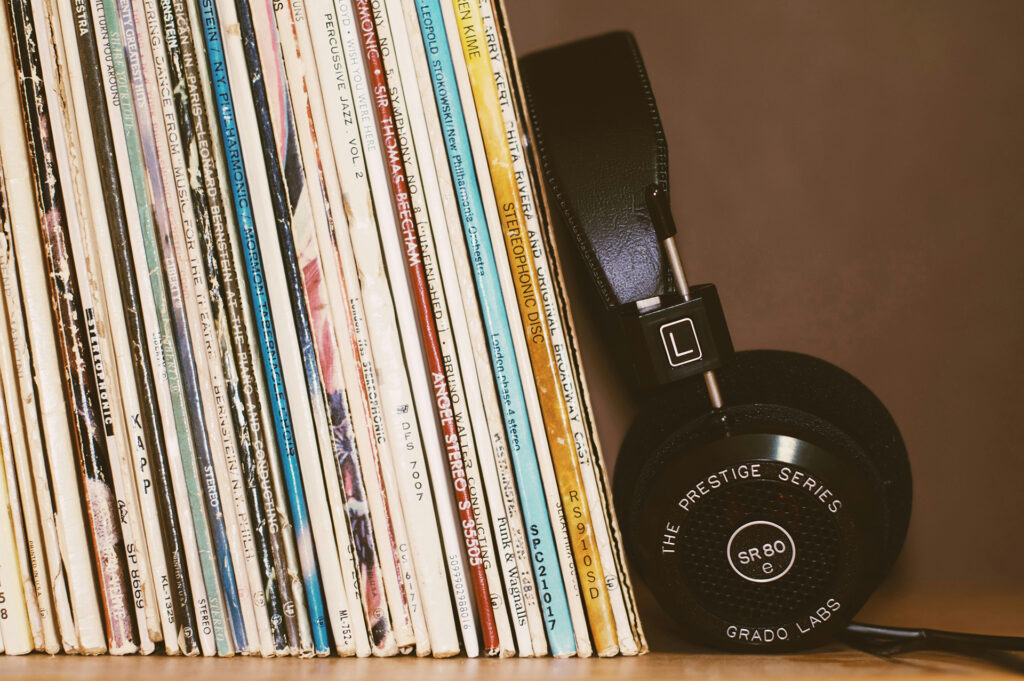
No 12: One of the Biggest Problems with Vinyl is its Weight and Bulk
Capital Audiofest had a really nice collection of music retailers selling very audiophile-tastic physical media, not just limited to vinyl. The problem is the logistics of getting the stuff home. Do you want to deal with finding a FedEx Office or UPS Store (very unlikely for this one) that can pack your expensive new vinyl up and ship it? Wouldn’t it be cool to have a table with somebody boxing up goodies and shipping them insured back to you at home? Department stores can do this with Christmas wrapping. The merch tent during The Masters at Augusta National does just what I am suggesting, so their patrons (do not call them fans) don’t have to hoof it through Amen Corner with $1,000 worth of Masters swag all day, as it is heading home with no fuss and no muss. Let’s steal this idea, as it is nothing but good for our business.
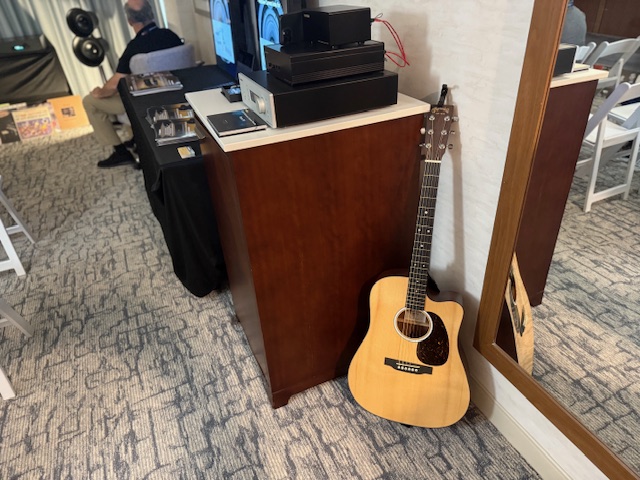
No. 13: More Rooms Are Using Props to Visually Brand Their Rooms
In some cases, guitars were on display. Exotic reel-to-reel decks, as well as well-protected vinyl in storage, were there to see at CAF 2025. These are great tricks to use the “a picture says a thousand words” concept and transform an audiophile demo room in a non-suite hotel room and makes it look the part – even before the PLAY button is ever touched or the stylus hits the vinyl. Bravo for the audio industry making this savvy move to decorate and treat (see above) their rooms.
No 14: Never Take Requests from the Attendees When Doing an Audiophile Demo at a Show
Some rooms had printed signs saying “come in and make a request.” No! That’s as foolish as a young TV news reporter doing a live interview and allowing the interviewee to hold the microphone, thus losing all control of the situation. Allowing requests in an audiophile demo that should be well-produced and highly scripted is a massive faux pas. If a serious audiophile wants to hear his own music, that’s cool, but you then have an opportunity to do a trial close, such as, “If these speakers blow you away and grossly exceed your expectations, are you ready to put a credit card down to buy them so we can facilitate your local dealer in filling your order?” If the answer is “Yes,” or even “Maybe,” then you could close the room down or offer an after-hours demo and make one sale pay for the entire show and possibly more, depending on the cost of the product, before you are even close to packing up your room and heading back to the factory or corporate offices.
No. 15: Tariffs Are Still the Biggest Issue in the Audiophile Business in the United States Today
MAGA readers were all over me about my article about how Gen Z turned on Spotify when they took ad money from Donald Trump’s heavy-handed ICE. Spotify didn’t see things through the optics of Gen Y and perhaps missed how explosive the power of a viral social media campaign can be, especially on short-form video sites like TikTok and Instagram.
The biggest issue facing the audiophile business is the actual life expectancy of the core, OG “original gangsta” Baby Boomer audiophiles. They are sadly aging out. How many more $20,000 DACs do you need when you are 80 or older, but which audiophile companies are doing anything about it? (Our advertisers – that was a trick question.)
It looks like even today’s very hard-right-leaning Supreme Court could invalidate the GOP’s massive consumer taxes, called tariffs, on the American people. There has been organic progress on lowering impulsive and grievance-filled tariffs, but they could all go away if the Supremes act in the best interests of the people in a country whose top topic is the cost of living.

Did you go to Capital Audiofest this year? Have you been there in past years? Do you go to other regional or even international audiophile shows? What do you think of our hockey-inspired audiophile show coverage? Comment below and we will very quickly approve your comments for everyone to see and to open up a discussion. We love to hear from you, even if you flame me for being a bleeding-heart coastal intellectual elite one-percenter libtard. I am from Philly. Trust me, I’ve been called worse and can defend myself.




Enjoyed your commentary and of course the hockey reference was a Phila Daily News Flyers connection. I missed the show this year. Agree with not having patrons choose their favorite tunes unless having a private audition. That’s a sure way to empty the listening room quickly. Wish vendors would showcase more of their top monitors with sub woofer along with their selected floor standing model, Bought my first good pair of speakers, Polk 10s from you at Bryn Mawr Stereo.
How cool is that – I was 16 back then 🙂